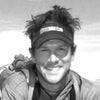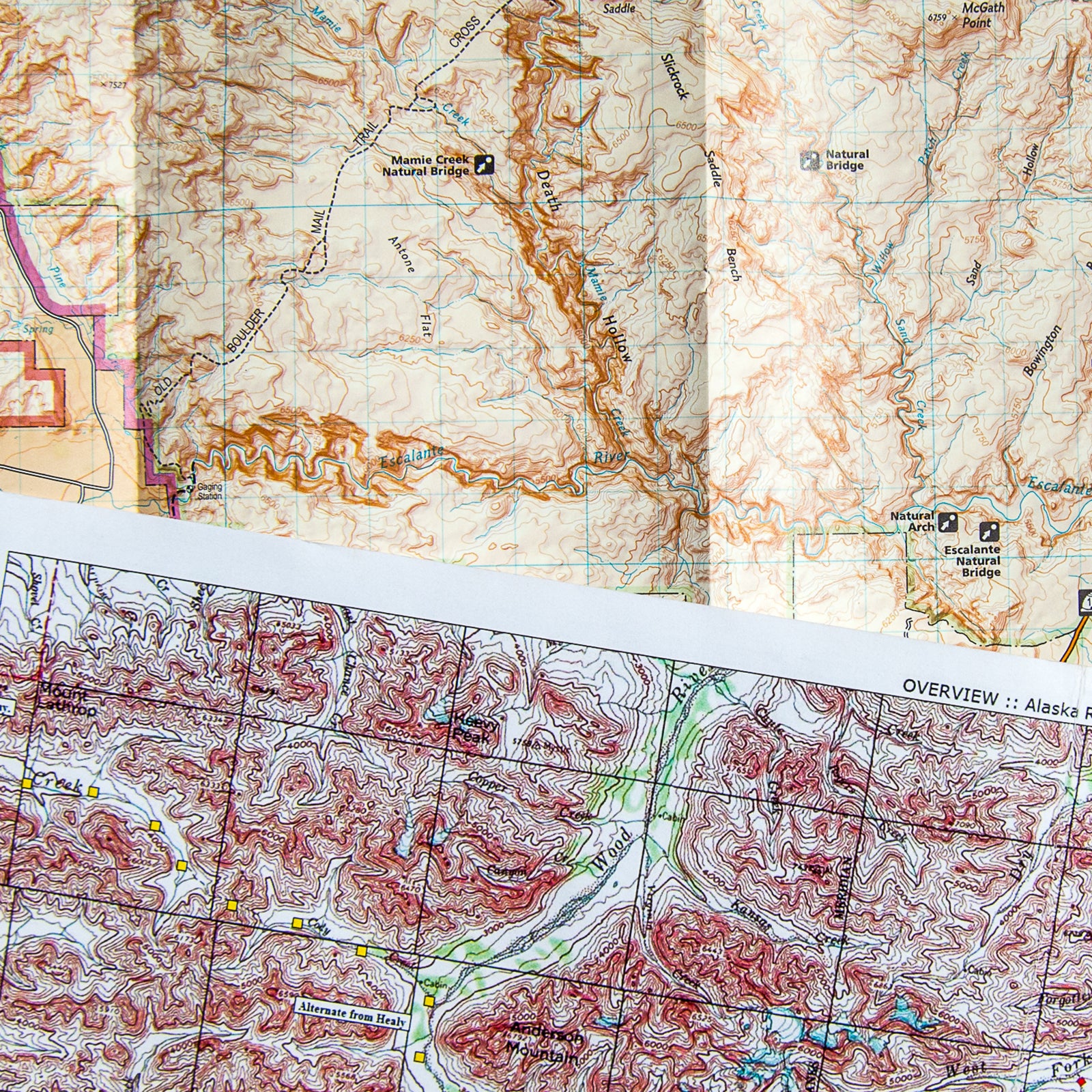When I first started hiking, I used╠řwhatever navigational resources╠řwere conveniently available and seemed sufficient. Before thru-hiking the Appalachian Trail in 2002, I purchased the ╠řand downloaded the Appalachian Long Distance Hikers AssociationÔÇÖs╠ř. And to explore ColoradoÔÇÖs Front Range the following summer, I bought a few that covered the area.
But when I started adventuring off the beaten pathÔÇöbeginning with the Sierra High Route,╠řculminating with the , and continuing with high routes of my ownÔÇöI had to create some or all of my navigational materials╠řfrom scratch. Through this process, I╠řformulated╠řwhat I believe is an optimal combination of maps and resources.
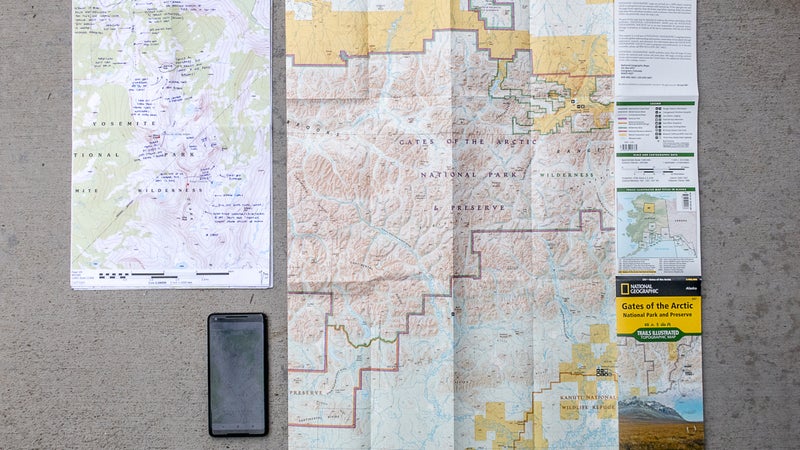
Paper Versus╠řDigital
I normally bring╠řthree types of topographic maps: a╠řpaper small-scale overview map, paper large-scale detailed maps, and digital maps (sometimes including additional imagery or data) on a smartphone.
The current generation of thru-hikers might consider me old-school╠řfor my continued reliance on paper maps. But overall╠řI think they are functionally superior to digital maps. They offer a significantly large╠řviewing window: an 11-by-17-inch╠řsheet amounts to 187 square inches of topographic detail, or about 13 times more than the screen on my Google Pixel 2 XL. Paper maps can also╠řbe written on, which is useful for making route notes and drawing bearings. Unlike electronic devices, thereÔÇÖs little to no impact if theyÔÇÖre dropped or sat on, they remain functional after being exposed to water (so long as theyÔÇÖre╠ř), they donÔÇÖt╠řrequire batteries or recharging, and theyÔÇÖre╠řmore easily viewed together by multiple people when discussing route choices.
I understand the appeal of digital maps, however. They donÔÇÖt require a good printer or a trip to your local gear store. A phone or handheld GPS is easily╠řpocketed╠řand less unwieldy. The mapping software can reliably pinpoint your location╠řand quickly calculate distance and vertical gain or dropÔÇöand, for a long trip, itÔÇÖs also more cost-effective.
Paper Overview Maps
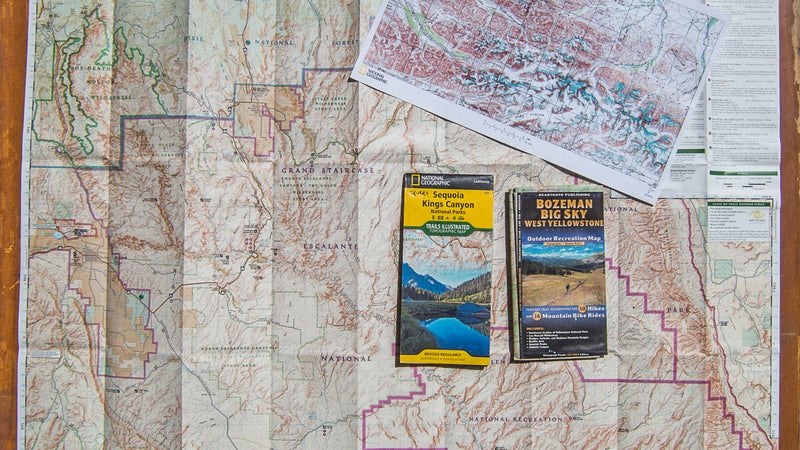
Overview maps normally have a scale of between╠ř1:50,000 and╠ř1:100,000, meaning that one unit on the map (e.g., an inch, a centimeter, a thumbnail) equals 50,000 or 100,000 units in the field. While planning a trip, I use these small-scale maps to develop a general understanding of the landscape, including the main watersheds, road systems, and trail networks. They aid with identifying a general route and potential alternates and working through logistics like travel, permits, and resupply points.
In the field, overview maps are useful for pinpointing distant landmarks and serving as a reference for midtrip planning discussions, self evacuations, and detours.
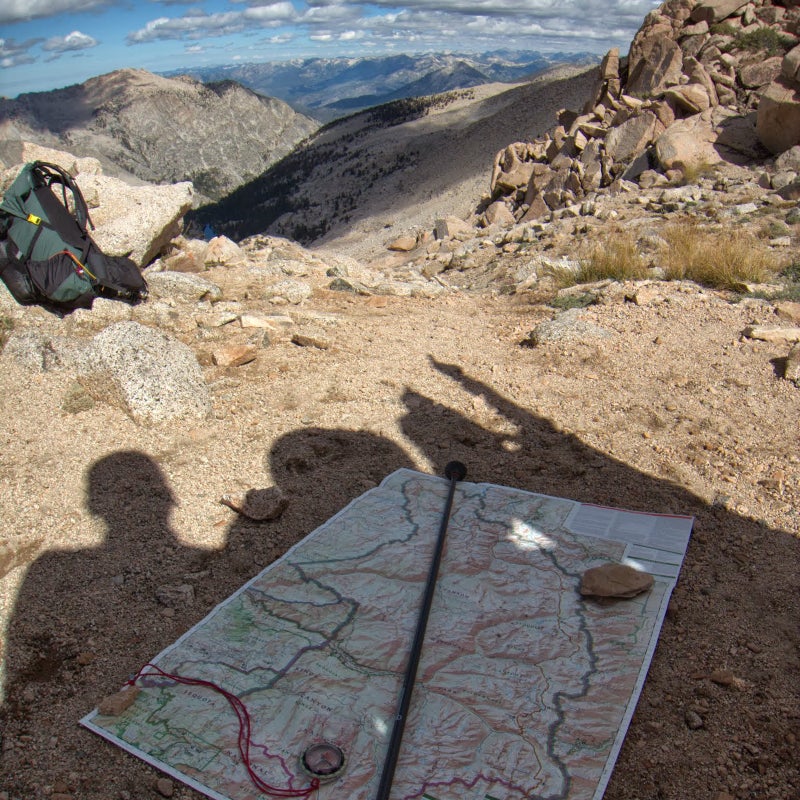
On its own, an overview map can be adequate for on-trail navigating. However, IÔÇÖd caution that not also bringing a large-scale map is╠řa missed learning opportunity.╠řBy definition, the topographic detail on a small-scale map is compressed, making it difficult to associate features on the map with features in the field, particularly subtle ones. If your map-reading skills are only so-so, trying to improve them using small-scale maps will generate limited results.
Making matters worse, popular overview maps do not use a standard scale or contour interval (the vertical difference between╠řcontour lines on a topographical map), so your brain must relearn this relationship with every new map. For example, the overview map of Yosemite National Park that I used in July is printed at 1:80,000 and has 50-foot contour lines, whereas the map IÔÇÖll use in Rocky Mountain National Park next month is printed at 1:50,000 with 50-foot contour lines, making the topography appear 37 percent less steep.
Also, these popular maps almost always have shaded relief. The shading causes features to stand out more╠řbut plays tricks with your eyes when not viewed from the south side of the map and looking north.
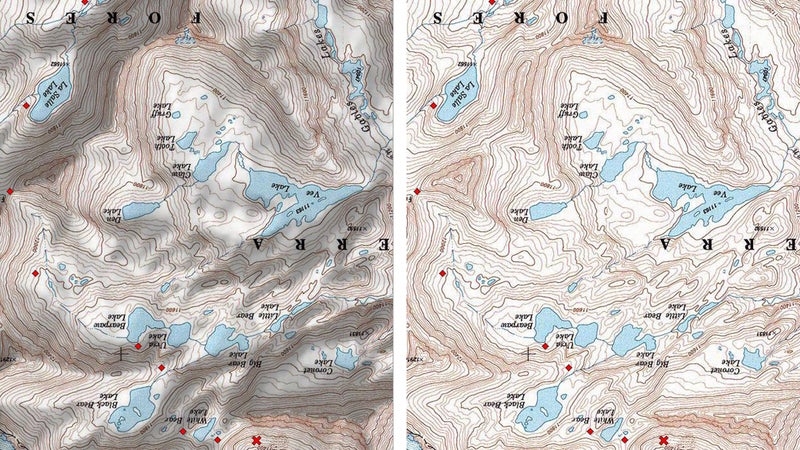
For an overview map, I prefer to use a commercial recreation map, like one╠řfrom , , National Geographic, or╠ř, because they are revised and updated regularly and conveniently include things like parking areas, backcountry campsite locations or zones, and services like permit offices╠řand visitor╠řcenters.╠řThey usually also encompass a defined╠řarea, like a national park or wilderness area, where my entire trip will probably take place.
Individual recreation maps cost $10 to $15 and are available online and from local retailers. If you are a premium member of ($40╠řper year), you can access the Trails Illustrated maps digitally via the website or app. (From the website, they can also be printed.)
For more remote spots where recreation maps are not available, the next best option is to create your own. I recommend using╠řthe MapBuilder Topo layer in . In GaiaGPS, the best layer is probably Gaia Topo, but itÔÇÖs also worth looking at ╠řor .
A final option is to purchase U.S. Geological Survey (USGS) 30-by-60-minute maps, which are at a scale of 1:100,000. (In this instance, minutes╠řare not in reference to time. The earth is divided into 360 degrees of longitude and 360 degrees of latitude; within each degree, there are 60 minutes of latitude and longitude, and within each minute there are 60 seconds.)╠řUnfortunately, these maps are not updated regularlyÔÇömany are more than 25╠řyears oldÔÇöand they omit many useful recreational details.
Paper Detail╠řMaps
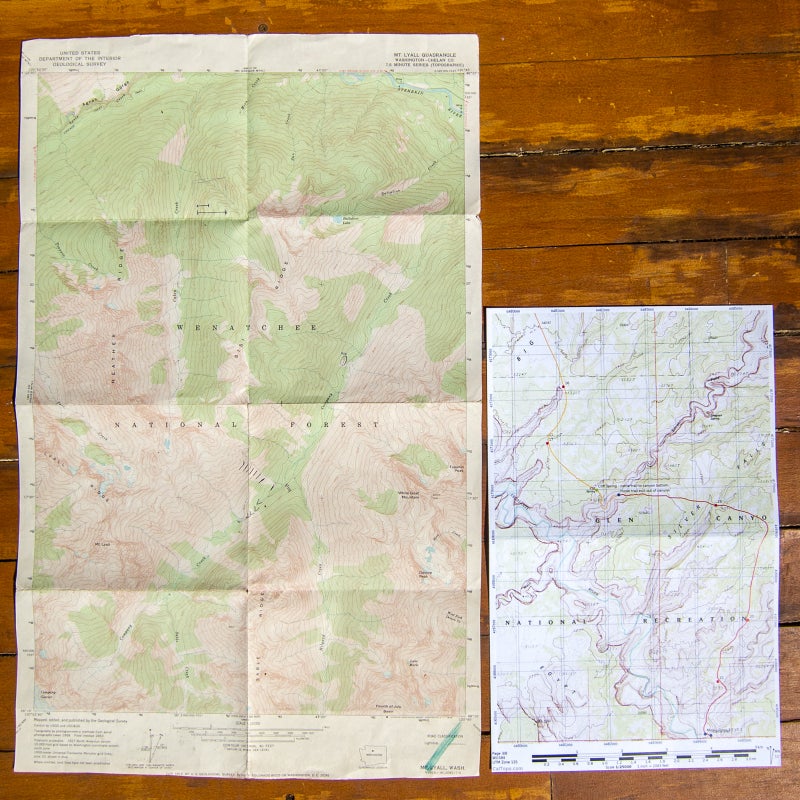
At home╠řI use detailed maps to more precisely plan my route. In the field, I rely on them to navigate and find campsites and water sources.
In the U.S., the gold standard for large-scale maps is the now digitized╠ř, produced by the USGS. US Topo maps are modeled after the pre-digital 7.5-minute quadrangles.
Each paper quadÔÇöabout 55,000 were originally madeÔÇörepresented╠ř7.5 minutes of latitude and 7.5 minutes of longitude.This equated to about 8.5 miles of latitude (the map height) and about 5.5 to 7.5 miles of longitude (the map width), since the physical distance between lines of longitude decreases toward╠řthe poles.
The USGS╠řquads have a scale of 1:24,000. One inch on these maps equals 0.3788 mile, since there are 63,360 inches in one mile. The most common contour interval is 40 feet. But the USGS was not always consistent in its units or contour intervals. For example, some parts of the High Sierra have 20-meter contours (about 66 feet), while 80-foot contours were used in the Tetons and Glacier National Park.
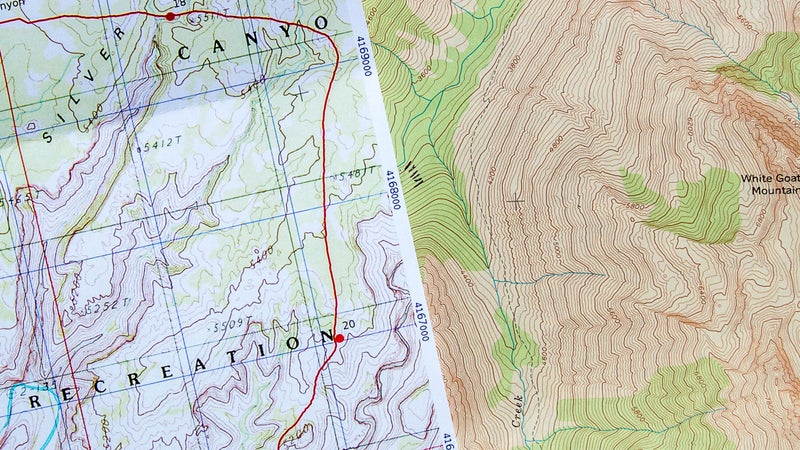
Today╠řscans of the quads can be accessed digitally, using platforms like CalTopo (my pick) and GaiaGPS. A related product that is better for Forest Service lands, , is also available through these sites. Both USGS and FS maps can be exported out of CalTopo and Gaia into print-ready PDFs.
An 11-by-17-inch╠řtabloid printout does not rival the beauty or quality of an original quad, however. If youÔÇÖre╠řnostalgic, purchase them directly from the USGS, or look for them at your local outdoor retailer (most likely in a wooden bureau with coin-slot-style drawers).
Special Circumstance: Alaska
The maps available for Alaska are generally different than those in the lower 48. Recreation maps are becoming more common, particularly for the national parks. For other areas, make your own map in CalTopo or Gaia, or track down the beautiful one-by-two-minute series that are printed at a 1:250,000 scale with 250-foot contours, available from the USGS.
The digital US Topo╠řlayer is increasingly available for Alaska, but I still prefer to use scans of the older 15-minute quads, which are printed at a scale of 1:63,360 and normally have 100-foot contour lines. A lot of topography can hide in these maps, due to the wide contour lines, but the Alaskan landscape is so huge that I find the large scale and contour interval more becoming of it. The incredible detail of the standard 1:24,000, 40-foot-contour series undermines its usefulness in this terrain.
Digital Maps
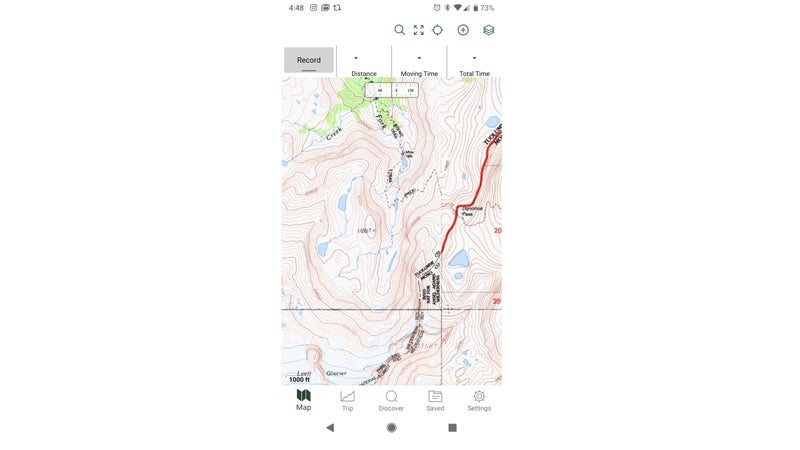
As a backup and supplement to my paper maps, I also load digital maps onto a smartphone or GPS unit, and sometimes other layers, too, like Landsat imagery and property╠řboundaries.
Digital maps have inherent value, even aside from the powerful software they bring.╠řIf I lose my paper maps or get way off routeÔÇöboth have happenedÔÇödigital maps become invaluable.╠řIÔÇÖve found other peopleÔÇÖs maps, and IÔÇÖve had clients lose their maps. And on one of my first guided trips, we bailed out of the Alaska Range and ended up 100 miles away from our intended exit point, way off both our overview and detailed maps.
Other Resources
In addition topographic maps, I like to have the following two╠řother items.
A Route Description
A route description is useful for providing general information about a route (or a part of it), interesting historical and scientific knowledge, personal anecdotes from the author, and in-depth explanations of tricky sections. I tend to avoid those containing╠řwordy descriptions of information that would be more efficiently conveyed by a topographic map.
While preparing for treks for which no route description was publicly available, I have made my own. In these DIY guidebooks, I consolidate bits of information from email and phone conversations, online forums and trip reports, land-manager websites, and travel reservations. I copy the content verbatim╠řbecause its full meaning often can only be interpreted once in the field.
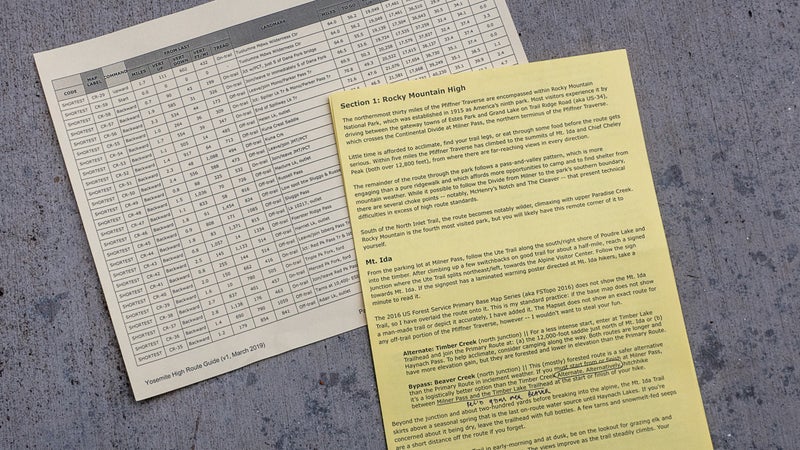
Data Sheets
A data sheet is a list of key landmarks (such as intersections, passes, creek crossings, and shelters) and corresponding data, usually╠řincluding incremental and cumulative distances. Premade sheets are available for some well-trodden routes, like the Appalachian Trail, but I often make my own. In my high-route guides, I also include vertical change because itÔÇÖs .
A data sheet it not useful for a spontaneous itineraryÔÇöyouÔÇÖll be off it after an intersection or twoÔÇöbut itÔÇÖs extremely convenient for established trails and routes, like a long-distance trail. With a data sheet, I can quickly dead-reckon to future landmarks, identify realistic camping areas for the night,╠řand determine if IÔÇÖm ahead or behind pace.
The information on a data sheet can be calculated manually from a paper map, using vertical change and distance, but itÔÇÖs╠řtedious work. Digital measuring tools in CalTopo and GaiaGPS will yield more accurate data and make much quicker calculations.
Data sheets can be edited down to create╠řother quick-reference lists, including water sources in an arid area, resupply points on a thru-hike, or designated campsites.
Storage
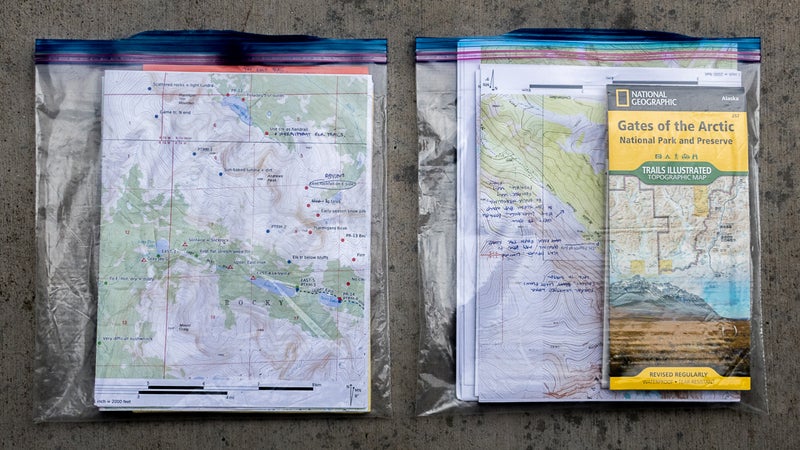
To keep my maps and resources clean and dry, I store them in gallon-size╠řfreezer bags. Resealable plastic bags╠řare tough and inexpensive, and they fit my 11-by-17-inch╠řmaps perfectly (after their half-inch margins have been removed and theyÔÇÖve been folded in half). Usually,╠řI carry two bags.╠řFor trips longer than about five days, IÔÇÖll take a third bag so that I have a fresh and clear bag for the second half of the trip.
One bag is for materials that IÔÇÖm using that day╠řor will be using soon, like before the end of the day╠řand possibly before a long break, when I would have the chance to resort things. I keep this bag free of clutterÔÇöthe more thatÔÇÖs in it, the less accessible things areÔÇöand I store it in a secure but easy-to-reach╠řlocation, like a dedicated side pocket on my backpack.
The other bag is for materials not presently in use, as well as other paperwork, like my backcountry permit and sometimes some writing paper. I try to compartmentalize maps and resources that IÔÇÖve╠řalready used╠řso that I donÔÇÖt waste time looking through them for my next map. I store this bag inside my pack, usually sandwiched between the liner and the╠řbody fabric.
This is part one of a four-part series╠řabout navigation. Part two is╠řÔÇťThe Gear You Need to Navigate in the Backcountry.ÔÇŁ╠řPart three is╠řÔÇťHow to Master Navigational Storytelling.ÔÇŁ╠řPart four is ÔÇťTest Yourself: How Well Can You Navigate?ÔÇŁ╠ř

